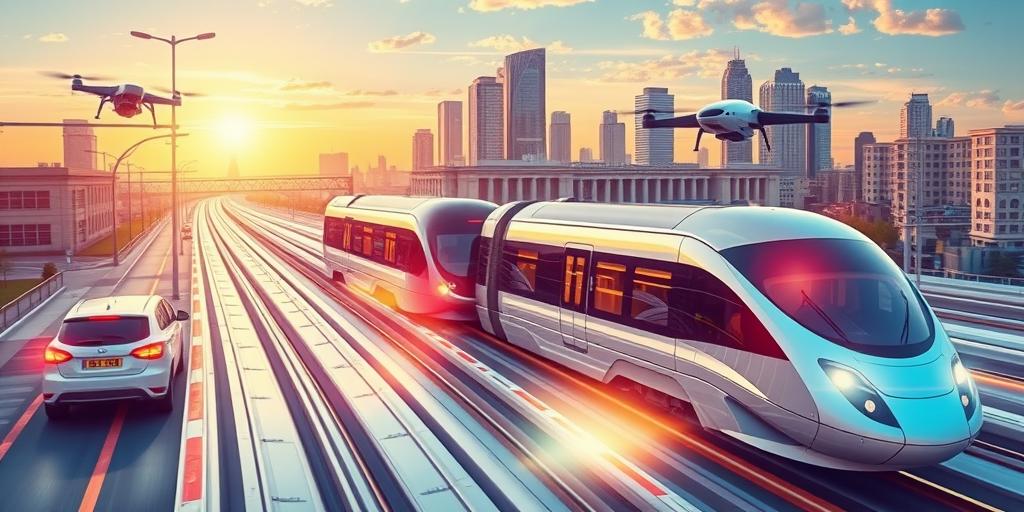Transportation is on the cusp of a revolution, driven by technological advancements and changing societal needs. The future promises a landscape dramatically different from what we know today. Buckle up as we explore the key trends shaping how we'll move in the years to come.
1. Electric Vehicles (EVs) Take Center Stage
The shift to electric vehicles is undeniable. Governments worldwide are incentivizing EV adoption through tax credits and subsidies. Battery technology is rapidly improving, increasing range and reducing charging times. Major automakers are investing billions in EV development, signaling a long-term commitment. Expect to see a wider variety of EV models, from affordable compacts to high-performance SUVs, catering to diverse consumer needs.
2. Autonomous Driving: The Dawn of Self-Driving Cars
Self-driving technology is no longer a futuristic fantasy; it's becoming a reality. Companies like Tesla, Waymo, and others are actively testing autonomous vehicles on public roads. While fully autonomous driving (Level 5) is still some years away, we're already seeing advanced driver-assistance systems (ADAS) in modern cars, offering features like lane keeping assist, adaptive cruise control, and automatic emergency braking. These technologies pave the way for a future where cars can drive themselves, reducing accidents and improving traffic flow.
3. Connectivity and the Internet of Things (IoT)
The future of transportation is deeply intertwined with connectivity. Vehicles are becoming increasingly connected to the internet, enabling features like real-time traffic updates, over-the-air software updates, and integration with smart home devices. The Internet of Things (IoT) plays a crucial role, connecting vehicles with infrastructure like traffic lights and parking garages, optimizing traffic management and reducing congestion. This interconnectedness creates a safer, more efficient, and more convenient transportation ecosystem.
4. Shared Mobility: The Rise of Ride-Sharing and Micro-Mobility
Ride-sharing services like Uber and Lyft have already disrupted the transportation landscape. The future will see further expansion of shared mobility options, including car-sharing, scooter-sharing, and bike-sharing programs. These services offer convenient and affordable transportation alternatives, particularly in urban areas. Micro-mobility solutions like e-scooters and e-bikes are gaining popularity for short-distance trips, reducing reliance on cars and promoting sustainable transportation.
5. Hyperloop and High-Speed Rail: The Future of Long-Distance Travel
For long-distance travel, innovative solutions like Hyperloop and high-speed rail are emerging. Hyperloop, a futuristic transportation system that propels passengers in pods through low-pressure tubes at speeds exceeding 700 mph, promises to revolutionize intercity travel. High-speed rail projects are underway in various parts of the world, offering a faster and more sustainable alternative to air travel. These technologies have the potential to connect cities and regions, fostering economic growth and reducing carbon emissions.
6. Drones and Urban Air Mobility: Taking to the Skies
Drones are already being used for various applications, including delivery, inspection, and surveillance. The future may see the widespread adoption of drones for urban air mobility, transporting passengers and cargo within cities. Electric Vertical Take-Off and Landing (eVTOL) aircraft are being developed, offering a quiet and efficient alternative to helicopters. Urban air mobility has the potential to alleviate traffic congestion and improve accessibility in densely populated areas.
Conclusion
The future of transportation is brimming with innovation and possibilities. From electric vehicles and autonomous driving to shared mobility and high-speed travel, the way we move is poised for a dramatic transformation. These trends promise a more sustainable, efficient, and convenient transportation future, improving our lives and shaping the world around us.









